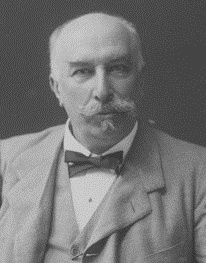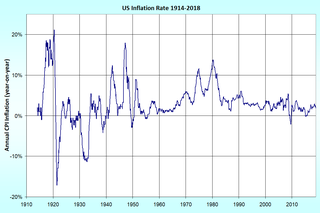A constitutional referendum was held in Denmark on 6 September 1920. It was held in order to make changes to the constitution of Denmark from 1915 that had been made necessary to facilitate the reunification of Southern Jutland into the kingdom of Denmark. The changes were approved by 96.9% of voters, with a 49.6% turnout. A total of 614,227 of the 1,291,745 registered voters voted in favour, meaning that 47.6% of eligible voters had voted for the proposals, above the 45% required by the constitution.

A constitutional referendum was held in Poland on 25 May 1997. Voters were asked whether they approved of a new constitution. It was narrowly approved, with 53.5% voting in favour. Voter turnout was just 42.9%. Although the 1995 Referendum Act stated that a 50% turnout was required to validate the referendum, the Supreme Court ruled on 15 July that the constitution could be introduced.

A referendum on the electoral law was held in Italy on 9 June 1991. Voters were asked whether the clause of the law on the number of preference votes should be scrapped. The result was 95.6% in favour, with a turnout of 65.1%.

A seven-part referendum was held in Italy on 15 June 1997. Voters were asked whether they approved of the repealing of laws on topics including privatisation, conscientious objectors, hunting, the judiciary and journalists, as well as whether the Ministry of Agrarian Politics should be abolished. Although all seven proposals were approved by voters, the voter turnout of 30% was well below the 50% threshold and the results were invalidated.

General elections were held in Italy on 6 November 1904, with a second round of voting on 13 November. The "ministerial" left-wing bloc remained the largest in Parliament, winning 339 of the 508 seats. The papal ban on Catholics voting was relaxed for the first time, and three Catholics were elected.

A referendum on privatisation was held in Slovenia on 19 January 2003. Voters were asked whether Slovenian Railways should be kept as a single company during the privatisation process and whether subscribers to Telekom Slovenije should receive a rebate for the above market price fees paid for cable TV prior to privatisation. The railways question was rejected by 51.9% of voters, whilst the Telekom proposal was approved by 77.6% of voters. Voter turnout was only 31%.

A referendum on state pensions was held in Latvia on 13 November 1999. A bill amending the state pension law had been passed by the Saeima on 5 August. It proposed equalising the retirement age of 60 for men and 57.5 for women at 62 by 2006, as well as beginning to withhold pensions from pensioners earning more than double the state pension the following year and withholding payments to all pensioners earning an income by 2005.

A referendum on the citizenship law was held in San Marino on 12 September 1999. Voters were asked whether the new citizenship law passed on 16 June should come into force. Although a majority voted in favour, the quorum of 32% of registered voters (9,663) was not achieved and the referendum failed.
A referendum on the retrospective disclosure of the financial details of large-scale privatisation was held in Slovakia on 22 October 1994. Although approved by 95.9% of those voting, voter turnout was just 20% and the referendum was declared invalid due to insufficient turnout.
A referendum on banning the privatisation of strategically important state-owned companies was held in Slovakia on 25 and 26 September 1998. Although approved by 84.3% of those voting, voter turnout was just 44.1% and the referendum was declared invalid due to insufficient turnout.
A two-part referendum was held in Switzerland on 23 May 1875. A new federal law establishing and certifying civil status and marriage was narrowly approved, whilst a new federal law on suffrage was narrowly rejected.
A referendum on the electoral system was held in Switzerland on 23 October 1910. Voters were asked whether they approved of introducing proportional representation for National Council elections. Although the proposal was approved by a majority of cantons, it was rejected by 52.5% of voters. This was the second such referendum, after the one in 1900 also failed. However, a third referendum on the same issue was held in 1918, and passed with 66.8% in favour.
A referendum on alcohol was held in Switzerland on 9 March 1941. Voters were asked whether they approved of a popular initiative for changing the alcohol order. The proposal was rejected by 59.8% of voters.
A referendum on unfair competition was held in Switzerland on 29 October 1944. Voters were asked whether they approved of a new federal law on unfair competition. The proposal was approved by 52.9% of voters.
A three-part referendum was held in Switzerland on 4 October 1896. Voters were asked whether they approved of a federal law on guarantees in the cattle trade, a federal law on the accounting system for the railways and a federal law on the disciplinary penal code for the federal army. Whilst the law on the railways was approved, the other two were rejected by voters.
Five referendums were held in Switzerland during 1929. The first three were held on 3 March on the issues of grain supply and a federal law on tariffs. The counter-proposal to the grain supply question and the tariffs law were both approved. The fourth and fifth referendums were held on 12 May on popular initiatives on road traffic and banning spirits. Both were rejected by voters.
Four referendums were held in Switzerland during 1939. The first two were held on 22 January on a popular initiative on civil rights and a federal resolution on the restricted use of the urgency clause in the constitution. The third was held on 4 June on a constitutional amendment regarding the funding for government policies on defence and unemployment, and was approved by voters. The fourth was held on 3 December on a federal law on the employment status and insurance for federal civil servants, and was rejected by voters.
Three referendums were held in Switzerland during 1947. The first was held on 18 May on a popular initiative for "economic reform and rights concerning work", and was rejected by voters. The second and third were both held on 6 July on revising the articles of the federal constitution covering the economy and a federal law on aged and bereavement insurance. Both were approved by voters.
Four referendums were held in Switzerland during 1949. The first two were held on 22 May on revising article 39 of the federal constitution concerning the Swiss National Bank and a federal law amending a 1928 law on measures against tuberculosis, with both rejected by voters. The third was held on 11 September on a popular initiative "for the recurrence to direct democracy" and was narrowly approved. The final one was held on 11 December on a federal law to amend the employment status of federal civil servants, and was also approved.
Five referendums were held in Switzerland during 1950. The first was held on 29 January on extending a federal resolution on promoting housebuilding, and was rejected by voters. The second was held on 4 June on the federal budget, and was also rejected by voters. The third was held on 1 October on a popular initiative "for the protection of ground and labour by prohibiting speculation", and was rejected by voters. The final two were held on 3 December on revising article 72 of the constitution regarding the election of the National Council and a federal resolution on financial order between 1951 and 1954. Both were approved by voters.








